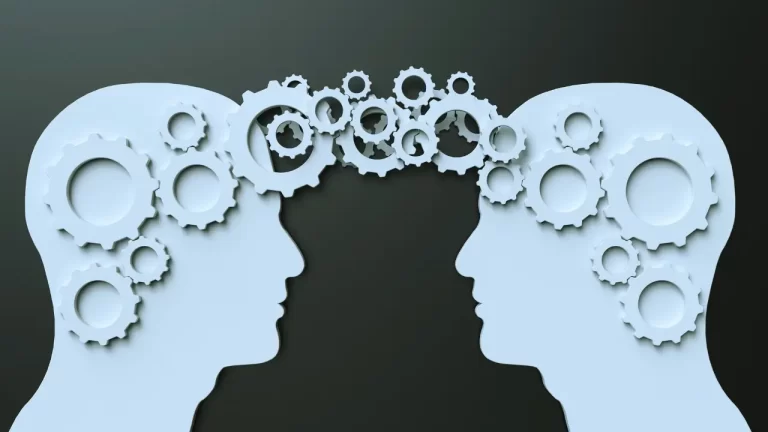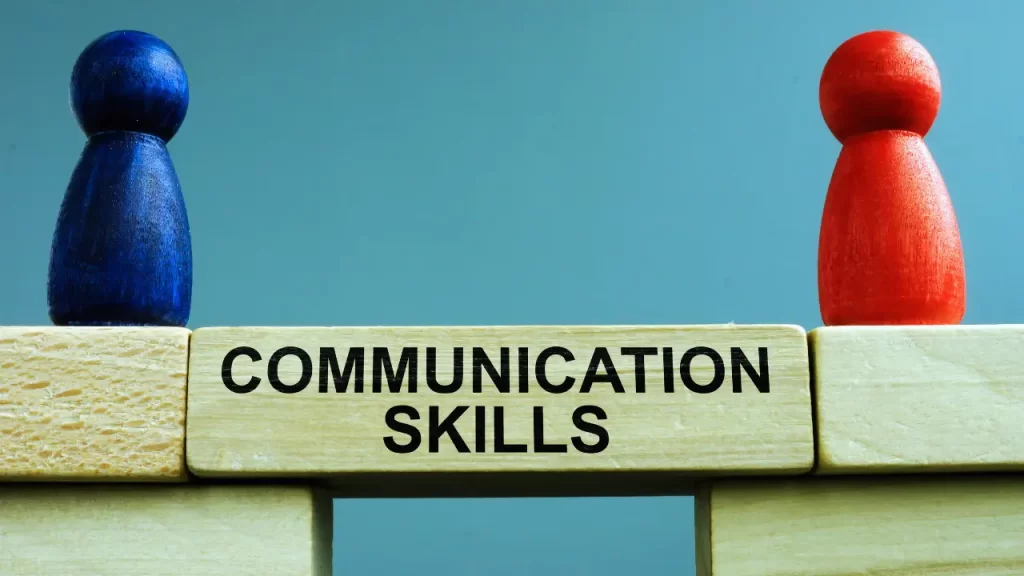“Effective communication is 20% what you know and 80% how you feel about what you know.” – Jim Rohn
We all know that knowledge acts as the scaffolding upon which improved communication is constructed. It encompasses the information, insights, and communication that individuals bring to a conversation, enabling them to convey ideas, share experiences, and engage in meaningful dialogue. Without knowledge, communication would lack substance and coherence, leaving conversations shallow and devoid of meaningful content.
But as Jim Rohn says, what you know is only 20% of your communication, and 80% of it is how you feel about what you know and how you transfer this feeling to others. Knowledge provides the framework; emotions serve as the vibrant colors that bring communication to life. Emotions infuse conversations with energy, passion, and humanity, allowing individuals to express their feelings, connect with others on a deeper level, and forge authentic relationships. They add layers of complexity to communication, shaping the tone, intensity, and dynamics of interpersonal interactions.

Look at the below scenario and how emotions and feelings impact the result of communication:
A Real-World Scenario of Leadership in Action
Meet Sarah, a project manager at a bustling software development company, “Tech Innovators”. Her team is in the midst of a high-stakes project for a major client, with a looming deadline. The pressure is mounting, and the stress levels are palpable. Sarah understands the importance of improving communication skills in the workplace in such situations.
One day, Sarah notices that the development team, led by a talented developer named Raj, has misunderstood the project requirements. They’ve spent days developing features that the client didn’t ask for. This miscommunication has cost the team valuable time and resources, and the stress levels have skyrocketed. Sarah realizes that improving communication in the workplace is needed to get the project back on track.
Sarah understands miscommunication clouds their melody, disrupting their rhythm. Sensing the need for unity, Sarah gathers her ensemble, inviting each member to share their concerns and confusion. In the heart of their meeting, Sarah becomes the maestro of emotions, guiding their symphony back to harmony. With each note, she transforms discord into unity, weaving threads of trust and connection.
Through her leadership, Sarah not only shares technical guidance but also tunes into the emotional currents of her team. Celebrating each resolved discord like a triumphant finale, she infuses the orchestra with renewed energy and purpose.

In the end, it’s not just about hitting the right notes; it’s about feeling the melody that binds them. Sarah’s ability to orchestrate both knowledge and emotion turns their discord into a symphony of success, where every member finds their rhythm in the grand concert of teamwork.
Over time, Sarah notices a significant improvement in the team’s communication skills and stress control. The team is more aligned, the misunderstandings have decreased, and the project is back on track.
In Sarah’s scenario, the power of effective communication and stress control is vividly exemplified. Beyond the technicalities of the project, Sarah’s adept leadership underscores the indispensable role of emotional attributes in communication. While she possesses the necessary knowledge and expertise, Sarah understands that conveying information effectively is as much about how it’s expressed and felt by others as it is about the facts themselves.
Sarah’s approach is marked by empathy, authenticity, and active listening. She creates a safe and open environment where team members feel comfortable expressing their concerns and ideas. By acknowledging their emotions and concerns, Sarah builds trust and fosters a sense of camaraderie within the team. This emotional intelligence allows her to address challenges with empathy and understanding, thereby improving communication skills in the workplace and collaboration.
Furthermore, Sarah’s own emotional disposition greatly influences the team dynamics. Her enthusiasm, confidence, and positivity inspire and motivate her team members, even amidst challenging circumstances. Conversely, her calm demeanor and reassurance help alleviate stress and anxiety, allowing for clearer communication and decision-making.
In essence, Sarah’s leadership exemplifies that effective communication is not merely about relaying information; it’s about connecting with others on an emotional level, understanding their perspectives, and fostering a supportive and collaborative environment. By embracing emotional attributes alongside technical knowledge, Sarah empowers her team to navigate challenges with resilience, ultimately driving productivity, and morale and improving communication in the workplace which ultimately resulted in project success.
Improving communication in the workplace is crucial for fostering a productive and cohesive team environment. Leaders like Sarah demonstrate the significance of creating channels for open, transparent communication, where team members feel valued and understood. By prioritizing improved communication skills in the workplace, organizations can mitigate misunderstandings, enhance teamwork, and achieve their objectives more effectively.

Errors that result in miscommunication
However, it’s important to note that effective communication isn’t always easy, and errors can occur. According to the Harvard Business Review, some common communication errors include:
There are numerous methods in which leaders may miscommunicate when tensions are elevated to improve communication in the workplace. Many errors are susceptible to occurring in high-stress situations. A selection of them is provided in the following list.
Half Listening or Not Listening at All: This includes lazy listening (listening but not really paying attention), listening to respond (waiting for your turn to talk rather than really hearing what the other person is saying), and not listening at all.
Poor Body Language: Crossing arms, leaning back, or showing defensive body language can send a message that contradicts your words.
Speaking Loudly and Quickly: Rushing through words or shouting something in an angry voice can lead to a defensive response.
Bringing Up the Past: Rehashing history can set a defensive tone and sabotage efforts to improve communication skills in the workplace.
Defending Feelings: Defending your feelings adds a layer of tension or conflict to the conversation.
Judging Another’s Feelings: Attaching judgment to the other person’s feelings can shut down a conversation and close the door to honest dialogue.
Poor Interpersonal and Non-verbal Communication Abilities: This includes using jargon, slang, and unfamiliar words, as well as emotional interference, physical distractions, and digital interruptions.
By avoiding common errors and implementing the mentioned key strategy, leaders can effectively improve communication in the workplace, especially in high-stress situations. Remember that one of a leader’s most crucial abilities is effective communication. By focusing on it, particularly while handling difficult circumstances, leaders may boost staff morale and inspire people to keep working.

Improving communication in the workplace through practice is indeed achievable, yet it’s not always easy. Many of these communication skills are rooted in specific brain regions and neural pathways, making targeted training essential for long-lasting improvement. By identifying the root cause and training specific pathways in the brain, individuals can solidify these skills and integrate them into their cognitive processes more effectively. While mastering soft skills may require dedication and persistence, understanding the neurological basis behind these abilities empowers individuals to approach their training with intentionality and precision. By aligning their efforts with the brain’s natural processes of learning and adaptation, individuals can optimize their potential for personal and professional growth, fostering greater communication skills proficiency and interpersonal effectiveness over time.
Elumind Peak offers a unique solution to enhance soft skills and improve communication in the workplace by leveraging insights from neuroscience and cognitive psychology. By understanding the specific brain regions and pathways involved in different aspects of communication, Elumind Peak provides tailored training programs designed to target and strengthen these neural circuits. Through interactive exercises, personalized coaching, and real-time feedback, Elumind Peak empowers individuals to develop key soft skills such as active listening, empathy, emotional intelligence, and nonverbal communication.
Moreover, by reviewing how miscommunication has impacted your organization’s services and revenue, you can gain valuable insights into the importance of investing in communication skills development. Miscommunication can lead to lost opportunities, decreased productivity, and damaged relationships with clients and stakeholders. By addressing communication gaps and equipping your team with the tools they need to succeed, you can mitigate these risks and drive better outcomes for your business.
Elumind Peak is the pinnacle destination for elite individuals and companies seeking cutting-edge brain and body training services, propelling them to the zenith of peak performance with a bespoke blend of high-tech expertise and personalized excellence. To “start your peak”, book your FREE PHONE CONSULTATION. We are here for you.
